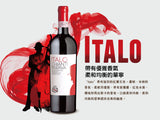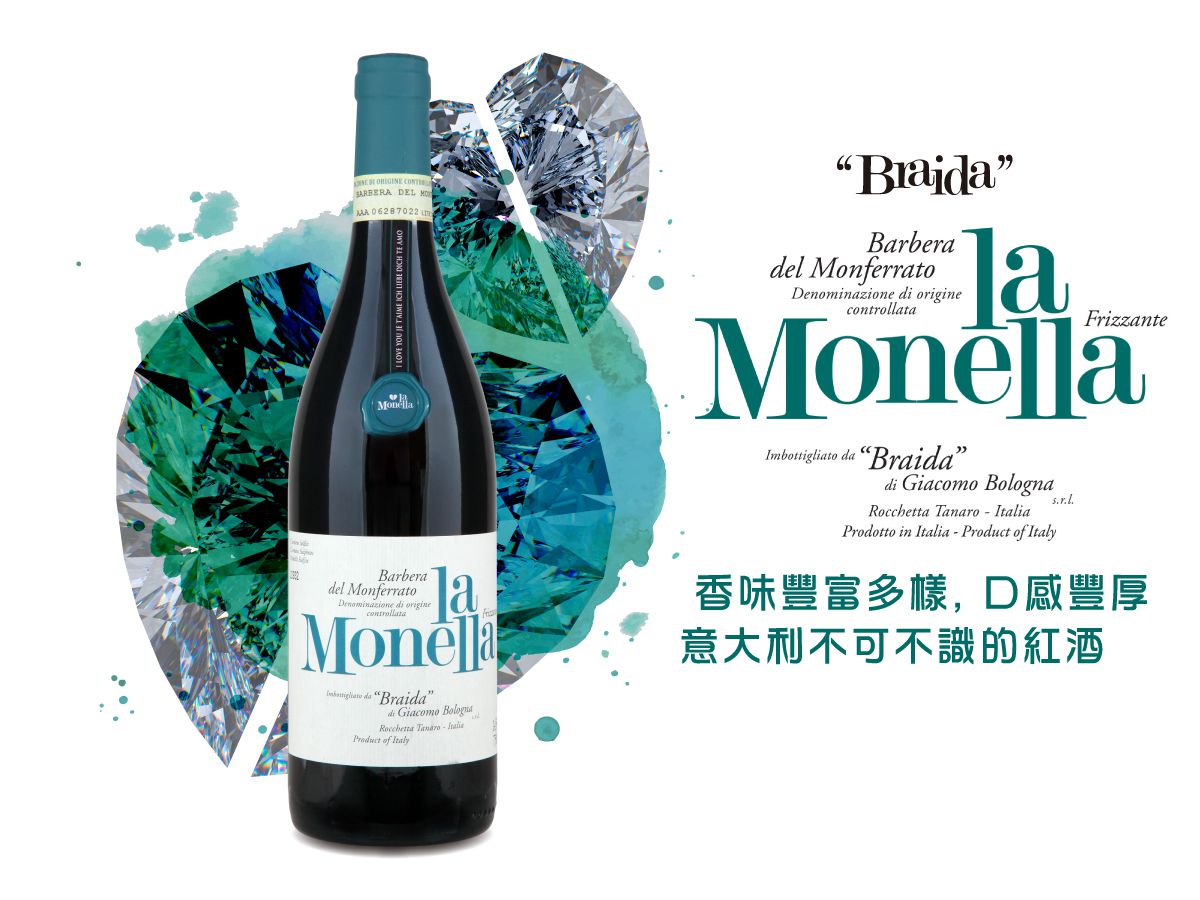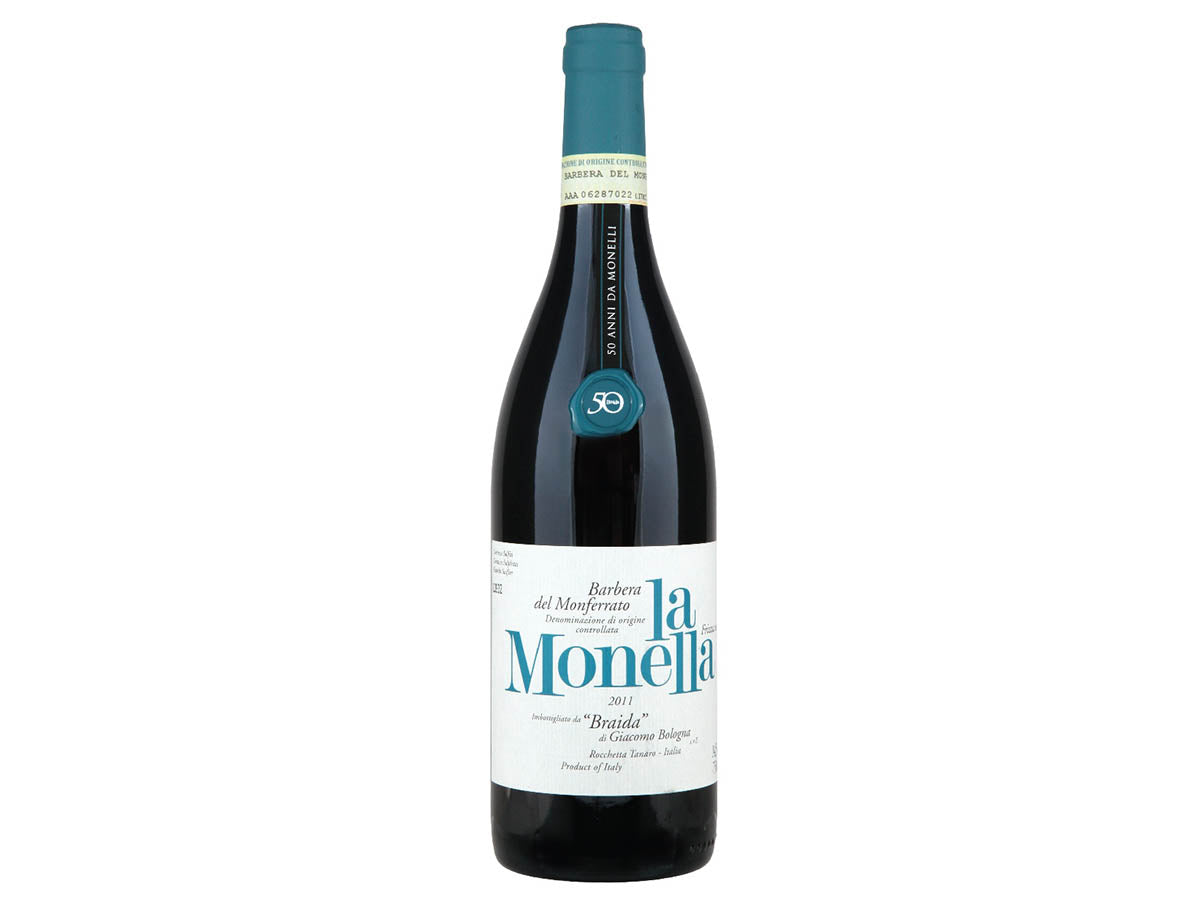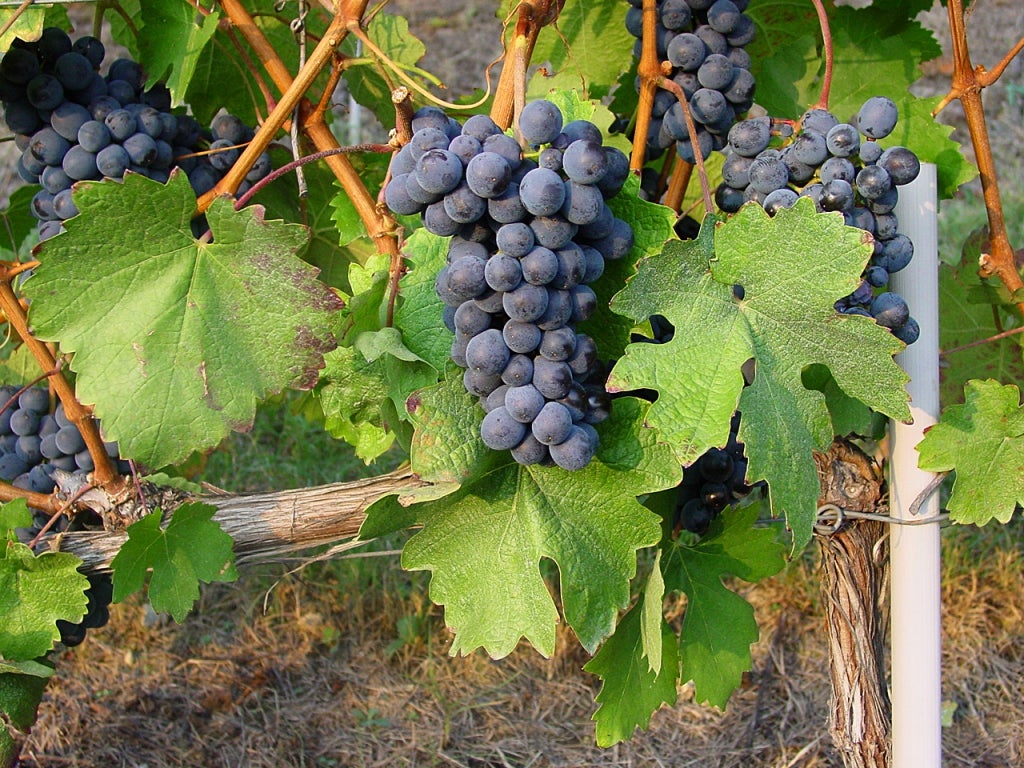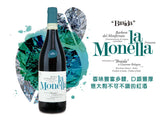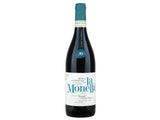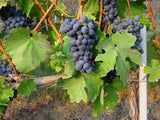Braida Barbera︱La Monella Barbera del Monferrato Frizzante DOC 2018
| Regions: Italy – Piedmont | Ratings: DOC |
| ABV: 14% | Decanting Time: N/A |
| Winery: Braida | Grapes: Barbera |
| Food Pairing: Pairs with cheese and deli, pizza, burgers, barbecues and fondue. | |
Braida
Braida's vineyards are concentrated in Monferrato and Langhe, a town in the mountainous region. There are five vineyards in total, three of which are located in the small towns of Rocchetta Tanaro (Rocchetta Tanaro) in Monferrato, Castelnuovo Calcea and Costiglione d’Asti. The rest are in Mango (mango) and Trezzo Tinella in Langhe. The annual production of Bellaida is about 300,000 wines per year.
Braida Winery was founded in 1961. The founder of the winery, Giuseppe Bologna, is a master who loves "boxing" (a traditional sport in Piedmont). He once won the boxing championship, so he was nicknamed Braida. In addition to being a coachman, Giuseppe Bologna also loves grapes and grows and produces super Barbera wines.
He fermented the grapes in French oak barrels to produce fine wines that successfully and unexpectedly produced the famous Bricco dell’ Uccello. Bricco dell’ Uccellone is BRAIDA’s flagship wine and is now one of the most famous Italian wines.

Barbera
Barbera is a red Italian wine grape variety that, as of 2000, was the third most-planted red grape variety in Italy (after Sangiovese and Montepulciano). It produces good yields and is known for deep color, full-body, low tannins, and high levels of acidity.
Century-old vines still exist in many regional vineyards and allow for the production of long-aging, robust red wines with intense fruit and enhanced tannic content. The best known appellation is the DOCG (Denominazione di Origine Controllata e Garantita) Barbera d'Asti in the Piedmont region: the highest-quality Nizza DOCG wines are produced within a sub-zone of the Barbera d'Asti production area. When young, the wines offer a very intense aroma of fresh red cherries and blackberries. In the lightest versions notes of cherries, raspberries, and blueberries and notes of blackberry and black cherries in wines made of more ripe grapes. Many producers employ the use of toasted oak barrels, which provide for increased complexity, aging potential, and hints of vanilla notes. The lightest versions are generally known for the flavors and aromas of fresh fruit and dried fruits and are not recommended for cellaring. Wines with a better balance between acid and fruit, often with the addition of oak and having a high alcohol content are more capable of cellaring; these wines often result from reduced-yield viticultural methods.

Piedmont
The Piedmont region of Italy, in Italian Piemonte, spreads on over 9,700 mi² (25.300 sq km) of land and counts a population in excess of 4,300,000 inhabitants. Piedmont is the second-largest Italian region by extension after Sicily.
It borders France in the west, Switzerland in the north, and Lombardy in the east. The southern side is naturally defined by the Apennines mountains which divide the region from the Liguria region. The Mediterranean coast is, therefore, just a short drive away.
Excellent geographical conditions
Piedmont is located in the hills of the Alps, and its name "Piedmont" means "foothill" in Italian. The vineyards of the producing area are almost all on the rolling hillsides, the land is well structured, and the soil is fertile. It has a continental climate with cold winters and hot summers. The significant temperature difference between day and night during the grape ripening period enables the grape skins to gather more flavor substances. The wine produced has a solid and lasting aroma.
The grapes used for winemaking in Piedmont are almost exclusively native varieties and are mainly used to make single-varietal wines. There are wide varieties of grapes here; the important red grape varieties include Nebbiolo, Barbera, and Dolcetto; the main white grape variety is Moscato. Among them, Nebbiolo is the highest-ranking grape variety, and Sangiovese and Sangiovese are the two main grape varieties in Italy and are well-known in the global wine industry. Moscato is Piedmont's most representative white grape variety and can be used to make Asti Spumante.




Payme, FPS, Alipay, and WeChat Pay are also available.
(including Hong Kong, Kowloon, New Territories urban areas, and Discovery Bay are free, other remote areas are negotiable)
9am - 1pm
1pm - 6pm
6pm - 10pm
For mainland orders, please place an order first, then we will arrange another quotation for the goods and transportation.






